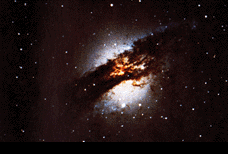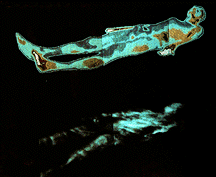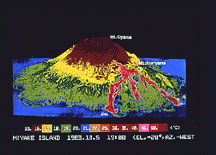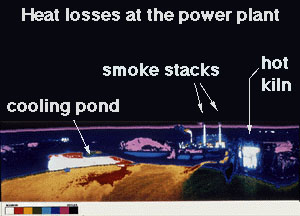ExploraTour - Looking at the World in a Different Light
Click on image for full size
NASA / Smithsonian Astrophysical Observatory
This is a picture of a galaxy in visible light. A galaxy is a large number of stars, some like our sun, some bigger, some smaller and all moving together through space.
This galaxy is called Centaurus A. Scientists were surprised when they looked at Centaurus A in other kinds of light. What they saw is evidence for a large jet of gas that is squirting out the top and bottom of the galaxy. The particles making up the jet give off light at radio and ultraviolet wavelengths. We can see the jet in these other types of light but it cannot be seen in visible light. If scientists had not looked at light beyond the range of our vision, we would never known that these types of jets existed.
Scientists believe something very violent is happening at the heart of Centaurus A. At the center of the galaxy resides a supermassive black hole.
When stars run out of hydrogen fuel, the gas in their outer layers falls inward on top of the gas at the center. This infalling gas crushes everthing below it. Soon the star has been compressed into a very small object. But this object has such strong gravity that not even light can escape from it.
This object is called a black hole because it is totally black -- we cannot see it. Other stars can fall into the black hole and also be crushed. When this happens, the black hole gets bigger and more powerful.
The black hole at the center of Centaurus A is spinning. Some process associated with the spinning, which is not yet understood, produces a large jet of gas.
Click on the buttons to see how Centaurus A looks in other types of light.











